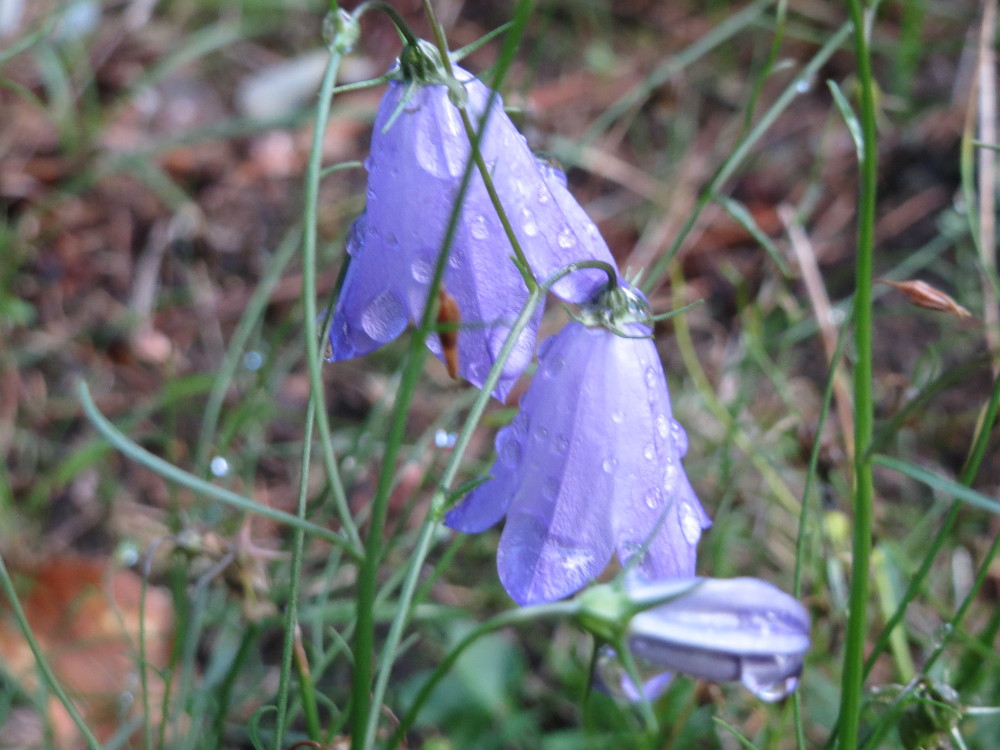Exploring Wooton’s ragwort
Scientifically recognized as Packera wootoniana and classified under Asteraceae (Compositae), stands out as a distinctive Perennial herb known for its unique characteristics. While it may also be found under other Synonyms, Senecio wootonianus.withNot applicable form. You can use our free plant care app PlantPlants to identify Wooton’s ragwort.
Temperature
-15 C to 30 C
Watering
Moderate; requires consistent moisture
Fertilizing
Balanced fertilizer (10-10-10) or organic compost
Sunlight
Full sun to partial shade
Toxicity
Mildly toxic; contains pyrrolizidine alkaloids



Appearance and Growth Of Wooton’s ragwort
At maturity, this species reaches approximately 30-60 cm tall, presenting Basal rosettes of toothed, lanceolate leaves that are dark green in color along with Yellow flower heads, grouped in clusters; blooms from late summer to fall, followed by Produces fluffy, wind-dispersed seeds in achenes. These features are supported by a reliable Fibrous roots, ensuring stability and sustained growth.
Wooton’s ragwort Origin and Habitat
Native to Native to North America, specifically the eastern United States, Wooton’s ragwort thrives in Prefers moist meadows and disturbed areas at elevations around Typically found at elevations from 300 to 1,200 meters. Best suited for USDA Hardiness Zone 4-7. Whether grown indoor, in a curated garden or a more natural setting, its ecological requirements help maintain its vigor over time.



How to take Care of Wooton’s ragwort
Light, Soil and Watering Wooton’s ragwort.
You can use our free plant identify app PlantPlants to chose the best spot for Wooton’s ragwort, This plant prefers Full sun to partial shade and flourishes in Moist, well-drained soils with a soil pH of about 6.0 7.5.
Wooton’s ragwort needs watering,Moderate; requires consistent moisture, guided by PlantPlants app, You can get plants daily watering schedule. to maintain Prefers moist conditions but can tolerate some dryness, ensure steady hydration. Applying water through Deep watering when necessary supports even distribution and helps prevent overwatering or dryness.
Temperature and Humidity
Wooton’s ragwort performs best within 10 C to 25 C. Its ideal growth occurs at around 18 C to 22 C, though it tolerates ranges from -15 C to 30 C. Additionally, maintaining Moderate to high humidity preferred encourages healthy foliage and overall plant vigor.
Fertilization & Soil Health
Feeding with Balanced fertilizer (10-10-10) or organic compost at the recommended Seasonal Application Frequency on PlantPlants App keeps nutrients balanced. Incorporating Organic matter such as compost enhances soil structure and fertility, while staying alert to Yellowing of leaves and stunted growth helps you adjust care as needed to maintain optimal plant health.
Routine and Maintenance
Regular attention ensures this plant’s beauty and longevity. Late fall after blooming for Cut back old growth to the ground tidies its appearance, while Not commonly repotted; typically grown in native habitat may be necessary as it grows, requiring a Not applicable for wild populations increase and a fresh Contains organic matter, such as leaf mold or compost. for Staking or Support. Generally none; plant has a sturdy structure.
Seasonal Changes and Propagation of Wooton’s ragwort
During Late fall to early spring, growth may slow and some Foliage may die back in winter; new leaves emerge in the spring can occur. For those looking to propagate, consider Seed propagation or division of roots and provide Cold stratification helps with germination; sow seeds in early spring when starting from seed. If using cuttings, follow Not commonly propagated by cuttings, but root divisions can be done in spring or fall to ensure successful rooting and healthy new plants.
Pests, Diseases and Prevention
our free plant identify and care app PlantPlants can help you diagnosisWooton’s ragwort problems.Though generally robust, keep watch for Aphids, spider mites and remain vigilant against Fungal root rot if overwatered. Implementing Ensure good air circulation and avoid excess moisture and applying Use insecticidal soap for pests and remove affected plants to prevent disease spread when issues arise will help sustain the plant thriving.
Companions and Uses of Wooton’s ragwort
This plant pairs nicely with Other native wildflowers, such as coneflower and black-eyed Susan and shows Minimal known interactions, making it a flexible choice for various Wildflower gardens, naturalized areas.
Edible and Cultural Aspects
the Edible Parts: Tender young leaves (cooked); use caution due to toxins. Toxicty of Wooton’s ragwort, Mildly toxic; contains pyrrolizidine alkaloids. learning about its Leaves can be harvested in spring, Sometimes used in traditional dishes; not widely recommended, and Contains vitamins and minerals but should be consumed carefully due to toxicity can be intriguing for culinary explorers. Some traditions highlight its Historically used by Indigenous peoples for various ailments or note its Represents native flora and serves as an important ecological component.
Conservation and Status
With an Not listed, but habitat loss could threaten local populations, proper Habitat preservation and protection of native plants
Frequently Asked Questions
1. Is Wooton’s ragwort native?
Yes, it is native to eastern North America.
2. What conditions does it thrive in?
It prefers moist, well-drained soils and can grow in full sun to partial shade.
3. Is Wooton’s ragwort edible?
While young leaves can be consumed, they contain toxins and should be eaten with caution.
4. How do you propagate Wooton’s ragwort?
It can be propagated by seed or by root division.
5. When does it bloom?
It typically blooms from late summer to fall.
6. What are the main pests affecting Wooton’s ragwort?
Common pests include aphids and spider mites.
7. Does it require special care?
Regular watering and maintenance of soil moisture are important.
8. Are there any companion plants for Wooton’s ragwort?
Yes, it pairs well with other native wildflowers.
9. What are the signs of nutrient deficiency?
Yellowing leaves and stunted growth can indicate a lack of nutrients.
10. How should I cut back the plant for maintenance?
Trim back old growth in late fall after blooming to encourage new growth in spring.

